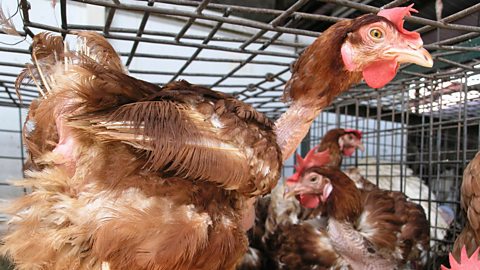Behavioural indicators of poor welfare

Displays of certain behaviour can indicate poor welfare and wellbeing of domesticated animals. These indicators include:
- stereotypy
- misdirected behaviour
- failure in sexual behaviour
- failure in parental behaviour
- altered levels of activity
Stereotypy
Stereotypy is when an animal displays repetitive movement. The behaviour expresses distress and some may argue that this provides the animal with a source of exercise. Stereotypy can be reduced by enriching the animal's environment through increasing the size of enclosures so that the animal has enough space for natural exercise.
Misdirected behaviour
Misdirected behaviour is when a normal behaviour is directed at the animal itself, its environment or others. This includes: birds over-plucking their feathers, gnawing on solid objects, hyper-aggression, and reduced reproductive success.
Failure in sexual behaviour
Animals may stop demonstrating mating behaviours such as seeking out mating partners. They may also stop being physiologically capable of mating.
Failure in parental behaviour
Males are often separated from females and their young and are removed from parenting. Females may abandon their offspring, act aggressively towards them or even kill or eat them. Some may steal the young of other females.
Altered levels of activity
Very low levels of activity are known as apathy. This could be shown by animals lying, sitting or standing in the same position for long lengths of time.
Very high levels of activity are known as hysteria. This could be shown by lots of movement or by animals being easily alarmed or panicky.